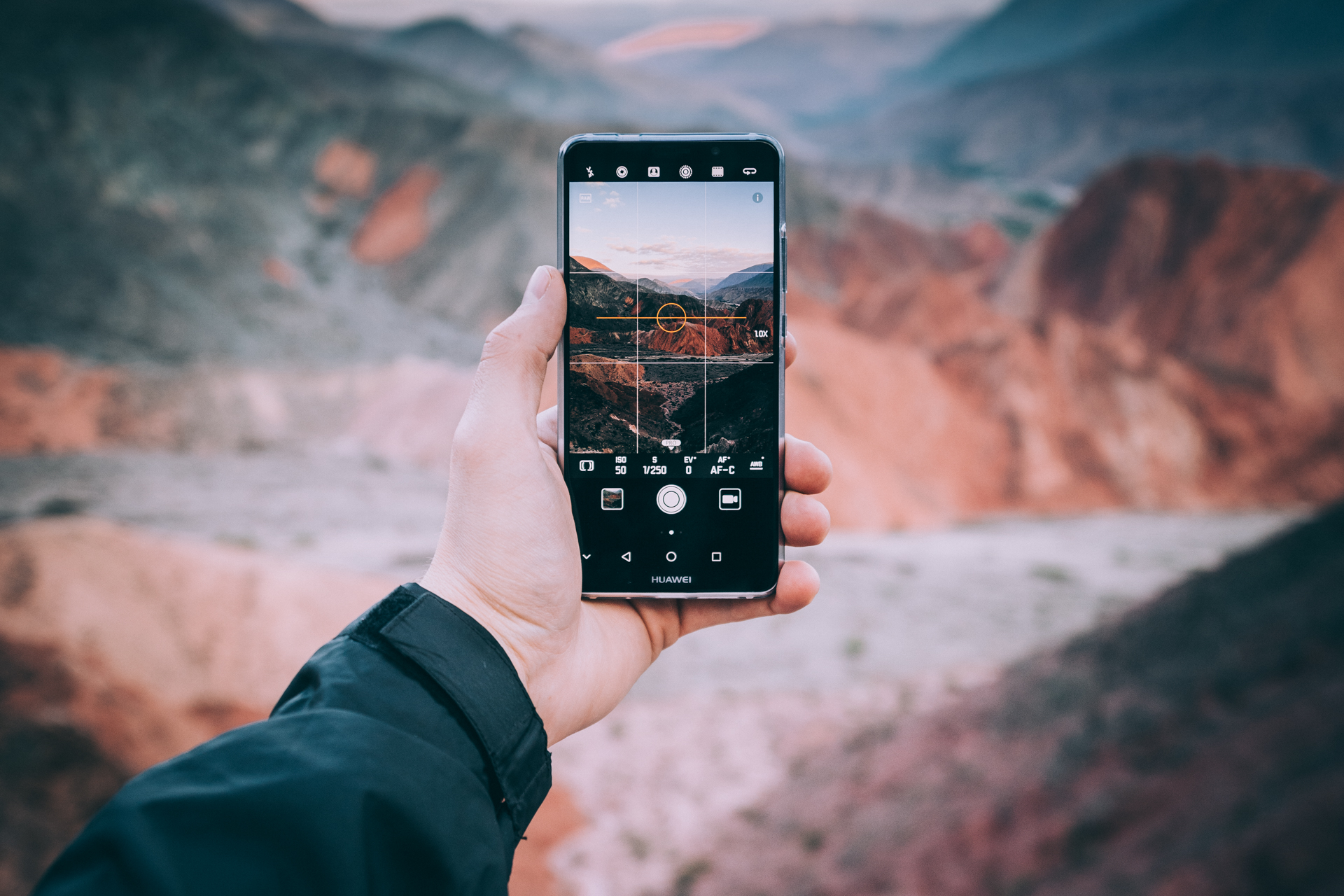Basics in Composition: Mobile Photography with Huawei
Huawei Mate10 Pro. Image photographed in Purmamarca, Argentina.
For those of you who have been checking my blog regularly know, that I previously worked with Huawei. Throughout the past several months I worked more closely with the popular smartphone company to explore means as a professional photographer using a mobile device as a camera. For me, making this decision was an easy one as I previously had plenty of time to familiarize myself with the pro menu settings in the camera interface. Together with the co-engineered lens from Leica, Huawei is pushing benchmark statistics with their phones. Combined with the processing power of the Huawei Mate10 Pro this camera-phone package was all I wanted for on-the-go photography.
This blog post will introduce you to a few simple techniques that I employ when I am out and about with nothing more than my mobile device. To excite people about photography, I think understanding and employing ways to compose an image in different ways, is the best facilitator for creative ideas.
Leading Lines:
Composition can be very simple, one technique I try to employ as often as possible is to have a visual line leading my eye to the subject or center of the image. While this is one of the more challenging techniques, it can be the most satisfying. An image that follows this example can break all other compositional rules, yet can be one of the strongest. The goal is to find a visually dominant line that grabs the viewers attention and leads the eye into the scene. In very abstract scenes this can even be used to bring the attention from one side to the other, while not stopping anywhere specifically. I use the term line, but this can be a person pointing into a certain direction, or the dust trail of a car disappearing the desert...
Very clean and simple composition photographed in Venice, Italy. Personally I would not choose this image as the "subject": the buildings by the water become less pronounced through the small amount of space they take.
Together with a bit of editing, I made the water stream my leading line. My aim here is to shape some curiosity as to what might be in the distance.
Waiting a few minutes for a boat to enter the frame immensely increased the visual tension in the photograph. Notice how the lighter color of the road and water behind it created a visual line leading the viewer into the image.
I moved quite a bit in this image to make sure that the water run-off in the center is not at an angle but is ponting directly towards the distance.
Framing:
Utilizing out of focus foreground elements that function as a frame is one of the oldest visual techniques and goes back to the old masters of painting. I think this has largely to do with the way we look at the world from our comfort place. I think looking through a frame at what is out there also gives us a unique way to choose what we include in a photo and what we decide to cover up. In nature this can be easily achieved, where it gets a bit more tricky, is the urban environment. Luckily for us Huawei has been able to push the camera technology to a level that allows for amazing out of focus elements in a photo, while maintaining tack sharp details in the areas where it matters. When I use this technique, I try to find a balance between this and other compositional techniques. Too much and one can see the intention of the framing, while too little becomes more of a distraction.
Here I am utilizing a dead tree in the foreground to create some mystery about this forest in Argentina. With the Huawei Mate10 Pro it is crucial to go really close, otherwise the depth of field will not allow the out-of-focus area.
This image I photographed in Istanbul through a plant that was growing conveniently on this wall. By framing it in such a way, this seemingly uninteresting street became a place of interest.
Rule of Thirds:
The rule of thirds might be the oldest and most capable compositional technique. If anything fails this will help to make the most mundane of scenes into an aesthetic photograph. In basic terms, the image is divided in 9 equal parts, 3 horizontal and 3 vertical. To compose, I either place my subject, or point of interest on one of the intersecting points, or I divide the image's layers into simple thirds. Look at the two examples below, it is easy to understand, and easy to execute, while still delivering an interesting photograph.
In this image from the Zugspitze in Germany, I deliberately chose to give the sky 2/3 os the space to open up the scene and show the magnificence of the space.
This image from Argentina showcases the opposite, there the foreground is taking up 2/3 of the space to eccentricate the straight lines leading us into the distance.
Move Around:
Perspective changes significantly when you move around a specific subject. Instead of resolving the framing by zooming into an image, make sure you make the most of what you have. The Huawei Mate10 Pro smartphone comes with a 24mm equivalent lens... that being said, I want to remind of the old masters saying: Work the lens. This means that if you have only one option, get to know it. In my mind there is nothing better than really getting to know a focal length, in this case a medium wide 24mm. While zooming into an image the scene is only compressed. Moving around allows for drastic changes in the scale between subject, fore- and background.
While not my master works, here are two examples of the same subject and background with radically different effects based on my spacial position:
This was the first image upon walking up to Laguna Esmeralda in southern Argentina. This was photographed standing up along the way.
This is the same scene, but this time I decided to go closer and kneel down a bit to create more emphasis on the foreground element. Additionally, by shifting my position, I was able to include more of the laggy valley in the distance.
Watch the Light:
Many times in the urban environment I notice reflections of sunlight in a shadow filled location, this sliver of light can be the focal point of the entire image. In nature, often times the clouds break in the most surprising way and let light through to fill a valley or summit. These small nuances of light, make a scene that much more interesting. I will purposefuly keep this section short as I am planning a full post on available light in the coming weeks, so stay tuned!
Work the possibilities:
I urge you to take a bit of time, an interesting place and most importantly your smartphone to try as many different ways to photograph the same place or space and evaluate for yourself what makes up the most interesting photo. Go high, go low... left or right; close or far away... any of these will drastically change the image.
Closing words: An image becomes good where there is balancing tension between the subject(s) and the scene. Together with understanding light, each photo will become better. The most encouraging thing I can say about becoming a better photographer: Go out and shoot!
Relevant Links:
My first experiences with Huawei
Disclaimer: Huawei ist ein Werbepartner, und dieser blogpost ist als promotion zu betrachten.

